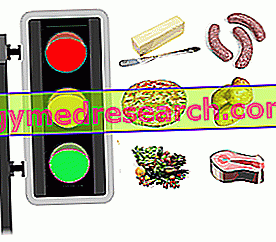
All living species are continually exposed to reactive agents that attack organisms from the outside and from within. Over the last few decades, the focus of research has focused in particular on free radicals due to their involvement in the onset and development of numerous diseases.
Free radicals are highly unstable chemical species due to the presence in their structure of one or more unpaired electrons. The peculiar electronic distribution causes free radicals to be very reactive and try to reach a more stable state by coupling with other molecules or atoms, "stealing" their hydrogen atoms or interacting with other radical species.
Once formed, free radicals react rapidly with other molecules through redox reactions in order to achieve a stable electronic configuration. During this type of reaction there is a transfer of electrons between the compounds that participate in the reaction, in which one species loses electrons (oxidation process) to the advantage of another that buys them (reduction process): the molecule that loses electrons is the reducing agent, while the one that gains them is the oxidant.
When a free radical reacts with a non-radical species it can lose or gain electrons or simply join the molecule itself. In any case, the non-radical species turns into a new radical that triggers a chain reaction, in which a free radical generates another free radical, until two radicals meet and stop the cascade of reactions.
ROS (Reactive Oxygen Species) and other reactive radical species are produced by the cells themselves during normal physiological processes, or may have an exogenous origin. Inside the body they are normally released as metabolic by-products of aerobic respiration, some enzymatic processes and immune reactions, while among the main external factors that lead to the formation of free radicals there are atmospheric pollution, ultraviolet radiation, chemical agents and stress .
In physiological conditions living systems possess endogenous defense systems that protect structural and functional biomolecules from the attack of free radicals. These defense systems, which can be enzymatic (glutathione, superoxide dismutase, catalase) and non-enzymatic (antioxidant molecules and vitamins taken with the diet), react with radical species before they can attack biological structures, dampening their potential harmful.
In the absence of this "antioxidant barrier", free radicals react quickly with life-critical biomolecules, such as DNA, lipids and proteins, causing severe cell damage and even cell death.
Due to excessive exposure to highly reactive oxidising species, the balance between free radicals and antioxidants may be lost; this triggers a situation of oxidative stress, which is responsible for important damages that compromise the functionality of cells and tissues and is associated with numerous chronic diseases, such as cardio-circulatory disorders (atherosclerosis, ischemia, stroke), diabetes, cancer, diseases neurodegenerative (eg, Parkinson's disease, Alzheimer's). Furthermore, oxidative stress is one of the main causes of cellular aging. The ROS in fact attack the lipid polynature chains causing their oxidation (lipid peroxidation). The alteration of the lipid chains represents a serious damage to the cellular membranes, which become more permeable and lose their efficiency, with consequent premature aging of cells and tissues.
From the chemical point of view, free radicals constitute a wide family of compounds that, to simplify, can be divided into two main categories: ROS (Reactive Oxygen Species), which are reactive species containing oxygen and which also include non-radical molecules such as peroxides, and RNS (Reactive Nitrogen Species) which include radical nitrogen species (NO nitric radical and peroxynitrite).
ROS are formed physiologically in small quantities as secondary products of respiratory metabolism, but can be generated in high quantities also due to environmental factors, such as UV radiation and pollution, or by the action of the immune system following the triggering of inflammatory reactions. ROS includes both radical species such as superoxide anion, the hydroxyl radical and hydroperoxyl radicals, which are non-radical species, such as hydrogen peroxide (H 2 O 2 ) and singlet oxygen. The hydroxyl radical and singlet oxygen are the most reactive forms of free radicals, as they rapidly oxidize all biological molecules, in particular unsaturated fats, proteins, nucleic acids, causing serious damage to the cells.



